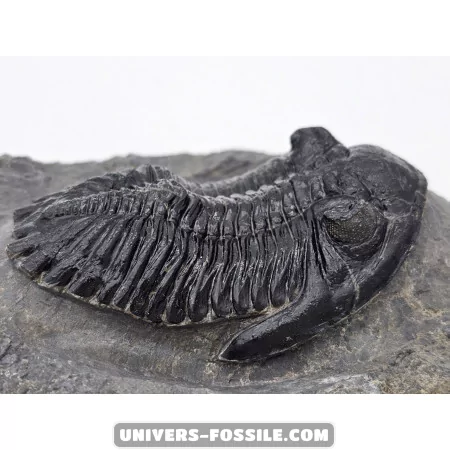Hollardops Trilobites - Fascinating Ancient Marine Fossils

Hollardops Trilobites
Hollardops trilobites are an extinct species of trilobites, a group of marine arthropods that thrived millions of years ago. These fascinating creatures were among the prominent inhabitants of the Paleozoic oceans, offering paleontologists valuable insights into ancient marine life.
Anatomy
Hollardops trilobites were characterized by their segmented body into three distinct lobes, hence their name. Here are some of the most remarkable anatomical features of these creatures:
- Segmented body: Like all trilobites, Hollardops had a body divided into three longitudinal parts - the cephalon (head), the thorax (body), and the pygidium (tail).
- Calcified exoskeleton: The outer shell of trilobites was formed of chitin and calcite, providing rigid protection against predators.
- Compound eyes: Hollardops trilobites possessed large compound eyes, consisting of many small hexagons, giving them a panoramic view of their environment.
- Antennae: Although few fossilized specimens have retained their antennae, it is likely that Hollardops had them to detect environmental stimuli.
- Segmented legs: Trilobites used their segmented legs to move along the seafloor, sifting through the sediments in search of food.
Welcome to the Fascinating World of Hollardops Trilobites
Hollardops trilobites were ancient marine creatures that roamed the seas during the Middle to Upper Devonian period, around 390 to 370 million years ago. They were part of a diverse ecosystem, interacting as both predators and prey alongside various other marine life forms.
Exploring the Habitat of Hollardops
These remarkable trilobites have left their fossilized remains in geological formations across different parts of the globe, including Morocco, Spain, Germany, and the Czech Republic. The discovery of Hollardops fossils in these regions has provided scientists with crucial insights into their distribution and evolution over time.
The Enigmatic Lifestyle of Hollardops
As benthic creatures, Hollardops trilobites resided on the ocean floor, scavenging for sustenance amidst the substrate. Their diet comprised organic detritus and small organisms, which they diligently captured using their distinctive segmented appendages.
Despite their natural defenses in the form of a robust exoskeleton, Hollardops trilobites were not invulnerable. They faced threats from predators such as cephalopod mollusks and predatory fish, with some specimens exhibiting scars of battles fought and diseases endured.
The Vanishing of a Species
Tragically, like their trilobite counterparts, the Hollardops ultimately met their demise. The factors leading to their extinction remain speculative, but their legacy lives on through the fossil record, offering us a glimpse into the ancient world they once inhabited.
Explore the intriguing history of Hollardops trilobites, a testament to the enduring wonders of our prehistoric past.
Hollardops Trilobites
Trilobites, including the intriguing Hollardops, were ancient marine arthropods that roamed the oceans for over 270 million years. These creatures eventually became extinct by the end of the Permian period around 250 million years ago, during the mass extinction event that wiped out most life on Earth. The exact causes of trilobite extinction remain a topic of debate among paleontologists, but it is likely they were influenced by climatic changes, geological events, and evolutionary pressures.
Despite their extinction, Hollardops trilobites and other members of their order continue to fascinate scientists and paleontology enthusiasts worldwide. Their well-preserved fossils offer valuable insights into the biodiversity and evolution of ancient oceans, allowing us to better understand the history of life on Earth.
In conclusion, Hollardops trilobites are fascinating examples of the diversity of ancient marine life. Their fossils are precious treasures that allow us to travel back in time and explore the mysteries of prehistoric oceans.
